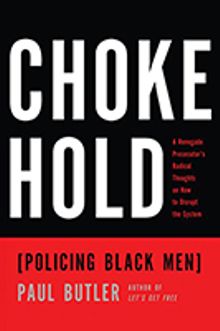In the aftermath of George Floyd's death, sales of anti-racism books skyrocketed. One of the most popular titles was White Fragility, by a white woman named Robin DiAngelo. According to NPD BookScan, the book sold 18,492 copies between March and April 2020. From May to June, it sold an incredible 437,289 copies. The next bestselling book, How to Be an Antiracist by Ibram X. Kendi, sold 334,375 copies in the same time period.
Though White Fragility has an admirable goal of pointing out how and why white people put their hackles up when presented with evidence of systemic racism—or that something they've said or done themselves may be racist—the book has received a fair amount of criticism for its deeper analysis and reasoning.
In this essay, economist Jonathan Church breaks down the logical fallacies in DiAngelo's wider arguments about white fragility, and her theory that all white people are existentially racist. In The New York Times, journalist Daniel Bergner wrote about his experiences attending DiAngelo's antiracism workshops over the past year, and questioned their effectiveness. And in The Atlantic, Columbia University linguistics professor John McWhorter went so far as to say that DiAngelo has taught white people "how to be racist in a whole new way."
Related: Read an Excerpt from Overcoming Hate Through Dialogue
As McWhorter sees it, DiAngelo's views of Black people are problematic, and readers of her book are discouraged from trying to look for solutions. Instead, DiAngelo accuses those who want to enact change of not wanting to put in the hard work of self-reflection.
"I see no connection between DiAngelo’s brand of reeducation and vigorous, constructive activism in the real world on issues of import to the Black community," writes McHorter. "And I cannot imagine that any Black readers could willingly submit themselves to DiAngelo’s ideas while considering themselves adults of ordinary self-regard and strength. Few books about race have more openly infantilized Black people than this supposedly authoritative tome."
In another essay about anti-racism books, author and professor Saida Grundy underscores the idea that reading and self-reflection are not enough. "In the absence of concrete economic and legislative changes, consciousness raising through anti-racist reading is mere filibustering—white people learning about their privilege and power without ever having to sacrifice either."
With that in mind, before we tell you about more books to read instead of White Fragility, here is a list of concrete ways to take action and the resources you need to do it. And if you still need to register to vote (even if it's for the next election), click here.

How to Be an Antiracist
In his review of White Fragility, book critic Carlos Lazada suggested How to Be an Antiracist does a better job of explaining our society. Lazada explained that while "Kendi endorses systemic interpretations of racism, he warns against branding all white people as racist," as DiAngelo does. Kendi proposes this would be just as problematic as generalizing the behavior of all Black people.
And unlike DiAngelo, Kendi offers the idea that our actions are tangibly racist or antiracist—and we can choose to be antiracist as much as possible. “We can be a racist one minute and an antiracist the next,” Kendi writes. “What we say about race, what we do about race, in each moment, determines what—not who—we are.”

Fatal Invention
“A must-read for those looking for an enlightened discussion of race in the 21st century,” (Library Journal), this book examines the myth of race as biological concept. Roberts shows how racial differences are often falsified and exaggerated by scientists, politicians and big business, a practice that serves to preserve racial inequality as the status quo.

From #BlackLivesMatter to Black Liberation
Half a century after the Civil Rights Act and the Voting Rights Act made it illegal to discriminate based on race, many people fail to understand how racism continues to affect our society, or why would we need a movement like #BlackLivesMatter. To answer these questions, activist and scholar Keeanga-Yamahtta Taylor examines the history of racism and how it has resulted in today’s inequalities in areas such as unemployment, incarceration rates and police brutality.

Chokehold
In Chokehold, former federal prosecutor Paul Butler explains how the American justice system is prejudiced against Black people, especially Black men—and why efforts to simply reform law enforcement won't be enough to create lasting change. The book also proposes solutions for dealing with black on black violence and making communities safer, without relying on the police.

Invisible Man
Invisible Man was published in 1952, but many of the issues its nameless Black male narrator faces still pervade society today. As Ellison shows us, intolerance runs rampant in a society that refuses to truly see people. "I am an invisible man," he writes in the prologue. "When they approach me they see only my surroundings, themselves, or figments of their imagination—indeed, everything and anything except me."
Related: What It's Like to Read Ralph Ellison's Invisible Man in 2020
This post is sponsored by Open Road Media. Thank you for supporting our partners, who make it possible for Early Bird Books to continue publishing the book stories you love.
Featured photo: James Eades / Unsplash



